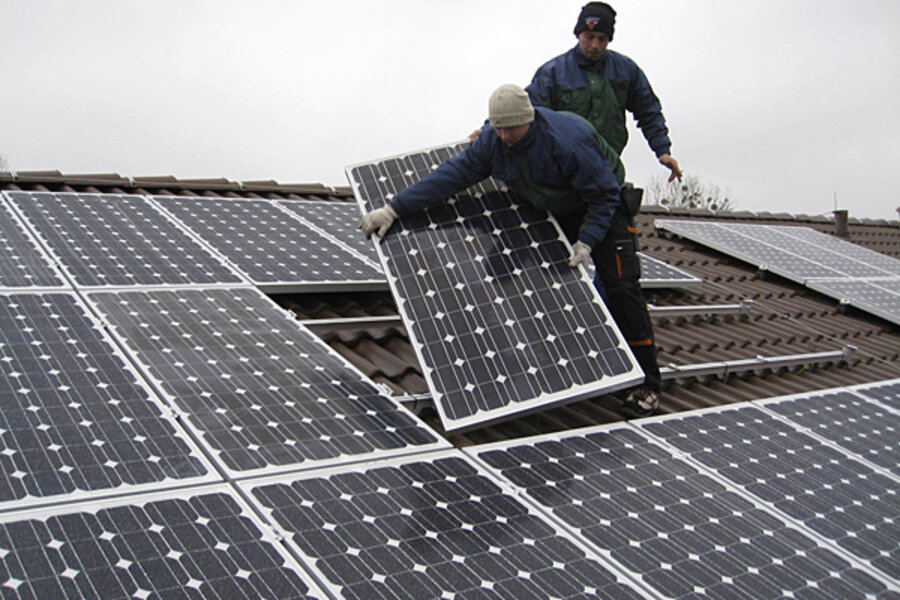While solar booms, a trade row intensifies
Loading...
An international row over cheap solar panels threatens to escalate into a full-blown trade war, which could undercut an ongoing boom worldwide in solar and call into question nation's strategic investments in the industry.
The problem: a glut of cheap Chinese solar panels that has forced many US and European panelmakers out of business. Even Chinese companies appear uncertain of survival, because competition has driven prices below break-even. Ironically, the cheap panels have spurred a boom in solar installations at the very time that solar manufacturers are losing their shirts.
The glut has also strained trade relations. The United States and European Union have imposed tariffs or are looking to do so. The Chinese are retaliating by investigating polysilicon it imports from the US and EU to make its solar panels.
There are still ways the players can avoid an all-out trade war. But the tit-for-tat escalations are not helping.
A year ago, seven US solar manufacturers complained to the US International Trade Commission that Chinese solar companies were getting Chinese government subsidies and were dumping their products on the US market. A month later, China initiated its own investigation into US solar subsidies. Undeterred, the US imposed tariffs earlier this year and, on Wednesday, affirmed that duties of some 24 to 36 percent on most Chinese solar panels was proper.
An even bigger trade fight is brewing in Europe, which represents nearly 75 percent of world demand for solar panels. In September, the European Union said it would investigate possible dumping of Chinese solar products. On Nov. 1, China fired back, saying it would investigate solar-grade polysilicon imports from the EU.
On Thursday, the European Union said it is also considering tariffs on Chinese-made solar panels and parts because of Chinese subsidies.
There's still room for compromise. For one thing, Chinese manufacturers are already changing where they manufacture the panels, reports suggest, in order to get around US tariffs. The supply-chain maneuvers may raise costs by up to 15 percent, according to one estimate, but the glut is so big that it's expected to have little if any effect on prices.
For another thing, the US solar industry is hardly united behind tariffs against the Chinese. While panel manufacturers have felt the squeeze and support the anti-Chinese move, installers oppose it because they are benefiting handsomely from cheap panels. A September report from GTM Research and the Solar Energy Industries Association forecast that a total 3.2 gigawatts of photovoltaic panels will be installed in the US in 2012, a 71 percent increase over 2011.
Indeed, the solar-panel manufacturer leading the charge for tariffs in the US is owned by a German company, SolarWorld, which has been leading the EU industry's push for tariffs as well.
For their part, the Chinese are unlikely to push so hard as to alienate a major trading partner such as the US. It certainly cannot afford to offend its even bigger trading partner, the EU. Moreover, Germany is gradually reducing its subsidies to the solar industry.
Despite this reduction in government aid, solar power production in Germany jumped by more than half this year over the first nine months of 2011, according to BDEW, the German utilities' industry association.
All three regions – the US, the EU, and China – have targeted solar manufacturing as an industry of the future that will generate new jobs. But their policies have created a glut that threatens the survival of many of those manufacturers.
They may have to rethink their strategies.







